Leeham News and Analysis
There's more to real news than a news release.
 Leeham News and Analysis
Leeham News and Analysis
- A350-1000 or 777-9? Part 3 April 25, 2024
- Boeing CEO promises company is turning around…again April 24, 2024
- Solid start for stand-alone GE Aerospace despite cuts to LEAP output April 23, 2024
- SPEEA, Boeing at impasse over safety program, union says April 23, 2024
- Better transparency needed on Boeing’s 1Q earnings call April 22, 2024
Airliner retirement age in the wake of low fuel prices
By Bjorn Fehrm
Introduction
March 31, 2015: We have received an update for Avolon’s “Aircraft retirement and storage trends” whitepaper from September 2012. In the age of changing fuel prices it makes for interesting reading as the author, Avolon’s Head of Strategy Dick Forsberg, includes the effects of fuel price changes in his analysis.
The analysis uses data from Ascends database up until 31 Dec 2014 to make its conclusions:
– Retirement age for jets remain stable with 60% of mainline aircraft still active after 25 years.
– Regional jets retire earlier, the 60% active age is 20 years.
– Behind early retirements of certain aircraft is first of type versions which have limitations in airframe or engines.
– Old aircraft and those who are stored more than two years don’t make it back from the desert.
– With continued low fuel prices deferred retirements would increase but still constitute less than 10% of new aircraft production.
Discussion
Avolons whitepaper when published September 2012 made away with the notion that aircraft were being retired earlier. Now two years later it revisits all segments and trends to check if there are any changes, especially against the backdrop of historical high fuel prices turned low and uses old aircraft demographics to understand what happens if fuel prices stays low for a longer period.
Aircraft life
The White paper looks at active aircraft fleets and how long they are in service, if they get stored and if they then get back in service. Figure 1 (click on all figures to get a larger view if needed) shows the progression of average retirement age for the worldwide fleet over the years.
If an aircraft does not get back from storage it is counted as retired when it went into storage, thus the long time storage of aircraft does not affect the curves. Aircraft which are seasonally stored or get back into service after a storage period is counted as in service aircraft.
Figure 1 shows incresing aircraft age until 2008 and then a slight decline.
Detailed analysis by Forsberg shows that the downward trend have now stabilized. The mainline jets have an average life expectancy of over 25 years and this has not changed over the last two years, Figure 2 (Green; 2013 and Blue; 2014 curves overlap each other).
There is no real difference between narrowbody and widebody jets other than the widebody aircraft retiring about a year earlier than narrowbodies, Figure 3.
The early retirements have been few, less than 4% of total and the reason behind aircraft going to part out or the desert without returning is that they belong to early production standards with low operating weights (A330/340, Boeing 777) or have first generation engines (A320, 737) and therefore have operational constrains compared to more recent aircraft.
Regional aircraft gets retired earlier, Figure 4. The regional jet segment is younger and a lot of the existing fleet is smaller 50 seat aircraft which has less compelling economics compared to newer and larger 70 and 90 seat jets.
Storage of aircraft
Aircraft are stored because of seasonal variations of demand for air travel but also for longer term changes of demand for a certain type of aircraft. If an aircraft gets stored for longer time, items on the aircraft which have calender time maintenance intervals start to expire and it gets progressively more expensive to take them back into service. Forsberg gives example of re-induction costing typically $1.5m for a narrowbody and $3.5m for a widebody that has been stored for two years.
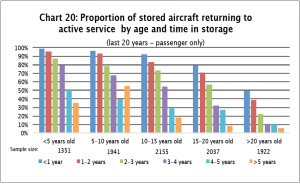
Figure 5. Aircraft age and storage time influences if there is a return to active service. Source: Avolon.
Should the storage be longer than two years or the aircraft is old when being stored the likelihood of it getting back into service diminishes, Figure 5. At an age of 15-20 yaers and a storage of longer than three years only 30% of the aircraft makes it back for a continued operational life.
The other back to come back is as spare parts for running fleets. The likelihood of being cut up and parted out as spares increases the closer an aircraft is to a heavy check when it went into the desert.
Low fuel prices and deferred retirements
The updated whitepaper makes an analysis of likely retirement trends should fuel prices stay low for further two to three years. Of the yearly retirement of 500 to 700 aircraft, about 150 to 200 has a maintenance situation that makes a longer life economically feasible at low fuel prices. The rest of the retirement candidates have such expensive engine or airframe maintenance actions due that a prolongation of their operational life is not justifiable.
Adding the aircraft that can be re-activated from storage to the deferred retirements Forsberg reaches a number of 200 to 300 aircraft that can be kept on for further years. Low fuel prices will also stimulate air travel due to lower fares, this means these 200 to 300 aircraft can not be counted as a net gain for a low fuel price market, the market expands and aircraft demand increases. The end result would be that around 10% of the current OEM production would be affected, something that OEMs can manage.
Summary
Aircraft retirement trends have stabilized in recent years, mainline jets having over 50% in service after more than 25 years. Aircraft that gets retired and parted out early was part of first production variants with low capabilities or un-economical engines. These limited production runs were low in number and these retirements constitute less than 4% of the market.
Low fuel prices can lead to old aircraft with an acceptable maintenance status being kept two to three years longer in service. As these numbers affects less than 10% of present new production it will be manageable by the OEMs.
Related
Category: Airbus, Airlines, Boeing, Bombardier, Douglas Aircraft Co, Embrarer, Leasing
Tags: 737, 757, 777, A320, A330, Airbus, Boeing, Bombardier, Embraer, Emirates Airlines
7 Comments on “Airliner retirement age in the wake of low fuel prices”
Leave a Reply Cancel reply
Email Subscription
Twitter Updates
My TweetsAssociations
Aviation News-Commercial
Commentaries
Companies-Defense
Resources
YouTube
Archives
- April 2024
- March 2024
- February 2024
- January 2024
- December 2023
- November 2023
- October 2023
- September 2023
- August 2023
- July 2023
- June 2023
- May 2023
- April 2023
- March 2023
- February 2023
- January 2023
- December 2022
- November 2022
- October 2022
- September 2022
- August 2022
- July 2022
- June 2022
- May 2022
- April 2022
- March 2022
- February 2022
- January 2022
- December 2021
- November 2021
- October 2021
- September 2021
- August 2021
- July 2021
- June 2021
- May 2021
- April 2021
- March 2021
- February 2021
- January 2021
- December 2020
- November 2020
- October 2020
- September 2020
- August 2020
- July 2020
- June 2020
- May 2020
- April 2020
- March 2020
- February 2020
- January 2020
- December 2019
- November 2019
- October 2019
- September 2019
- August 2019
- July 2019
- June 2019
- May 2019
- April 2019
- March 2019
- February 2019
- January 2019
- December 2018
- November 2018
- October 2018
- September 2018
- August 2018
- July 2018
- June 2018
- May 2018
- April 2018
- March 2018
- February 2018
- January 2018
- December 2017
- November 2017
- October 2017
- September 2017
- August 2017
- July 2017
- June 2017
- May 2017
- April 2017
- March 2017
- February 2017
- January 2017
- December 2016
- November 2016
- October 2016
- September 2016
- August 2016
- July 2016
- June 2016
- May 2016
- April 2016
- March 2016
- February 2016
- January 2016
- December 2015
- November 2015
- October 2015
- September 2015
- August 2015
- July 2015
- June 2015
- May 2015
- April 2015
- March 2015
- February 2015
- January 2015
- December 2014
- November 2014
- October 2014
- September 2014
- August 2014
- July 2014
- June 2014
- May 2014
- April 2014
- March 2014
- February 2014
- January 2014
- December 2013
- November 2013
- October 2013
- September 2013
- August 2013
- July 2013
- June 2013
- May 2013
- April 2013
- March 2013
- February 2013
- January 2013
- December 2012
- November 2012
- October 2012
- September 2012
- August 2012
- July 2012
- June 2012
- May 2012
- April 2012
- March 2012
- February 2012
- January 2012
- December 2011
- November 2011
- October 2011
- September 2011
- August 2011
- July 2011
- June 2011
- May 2011
- April 2011
- March 2011
- February 2011
- January 2011
- December 2010
- November 2010
- October 2010
- September 2010
- August 2010
- July 2010
- June 2010
- May 2010
- April 2010
- March 2010
- February 2010
- January 2010
- December 2009
- November 2009
- October 2009
- September 2009
- August 2009
- July 2009
- June 2009
- May 2009
- April 2009
- March 2009
- February 2009
- January 2009
- December 2008
- November 2008
- October 2008
- September 2008
- August 2008
- July 2008
- June 2008
- May 2008
- April 2008
- March 2008
- February 2008


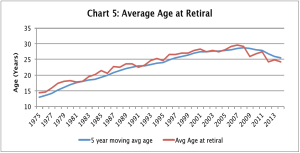
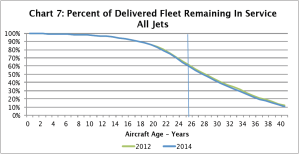
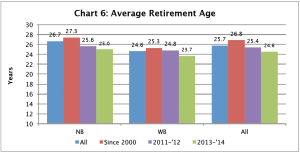
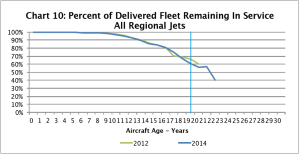
Thanks interesting statistics. I guess in line what with general impressions.
For the first time in 25-30 years, a significantly more efficient and quiet generation of engines will be introduced on the enormous NB fleet. I wonder how that will influence retirement age in the next 10-15 years.
It seems that for a good part of the 9000 A320 family delivered so far, the engine becomes the major weak spot. The rest of the aircraft is OK is terms of airline requirements. And will be able to fly for more then 50 years/180k fh’s… See slide 19: http://events.aviationweek.com/html/mro11/Presentation%20Chris_Reamy_MRO%20Trends_%20OEM%20Update.pdf
Re-engining becomes more attractive IMO
– Scale (thousands of young airframes) to reduce costs
– ROI for airlines of a new engine if it burns ~15% less and meets noise restrictions.
– The three OEMS are / will be in a big fight. RR wants back in & GE /CFM simply missjudged the GTF. Lots of action in the next decade..
Contrary to the MAX and NEO, the aircraft wouldn’t be adjusted for the engine, but an existing engine be adjusted for the known A320CEO limitations. So probably not as efficient as the NEO’s, but close. Winglets, smart galleys etc. can be retrofitted.
http://cdn-www.airliners.net/aviation-photos/photos/4/7/2/2612274.jpg
I have seen comments that when an engine comes off the wing for its maintenance, there is a trend to replace time expired items not with new but part life remaining. So instead of giving the engine a new lease of operating hours they are asking the owner how long are you going to be keeping the plane, and ‘designing’ the overhaul to suit.
Pingback: Smalls & Docs: Aircraft retirement trends, US regional consolidation, Thai airlines restricted, manufacturer exposure to Gulf carriers | SkyWriter Aviation
Interesting report.
I have often thought that many appraisers do a disservice by lumping all airplane models and assuming an average retirement age (e.g,. 25 years).
The truth can vary dramatically by model due to economic obsolesence.
I feel sorry for investors in A340-500/-600s. I suspect the same will be true of the A380. Hard to imagine any secondary market for these airplanes given there is not much of a primary market.
In reply to Enzo, I think most appraisers do not lump all aircraft into one retirement age bracket. They look at widebodies and narrowbodies separately, and also expect some specific models to have more or less longevity than average. And there is also consideration for the first ones off the line, as well as the last ones. Appraisers’ opinions also take into account the fact that some aircraft are more likely to be good freighter candidates later in life.
Maybe it’s covered in the Avalon report, but I think the “mainline jets” should be divided into the passenger and freighter models. The freighters tend to last longer, but the bulk of the fleet is not freighters.
Very interesting. I wonder how the change over time has or hasn’t been mirrored in airline and ALC write down policies and therefore their business and pricing models.
Pingback: Weekly Roundup, Good Friday 3 April 2015 - The Travel Insider